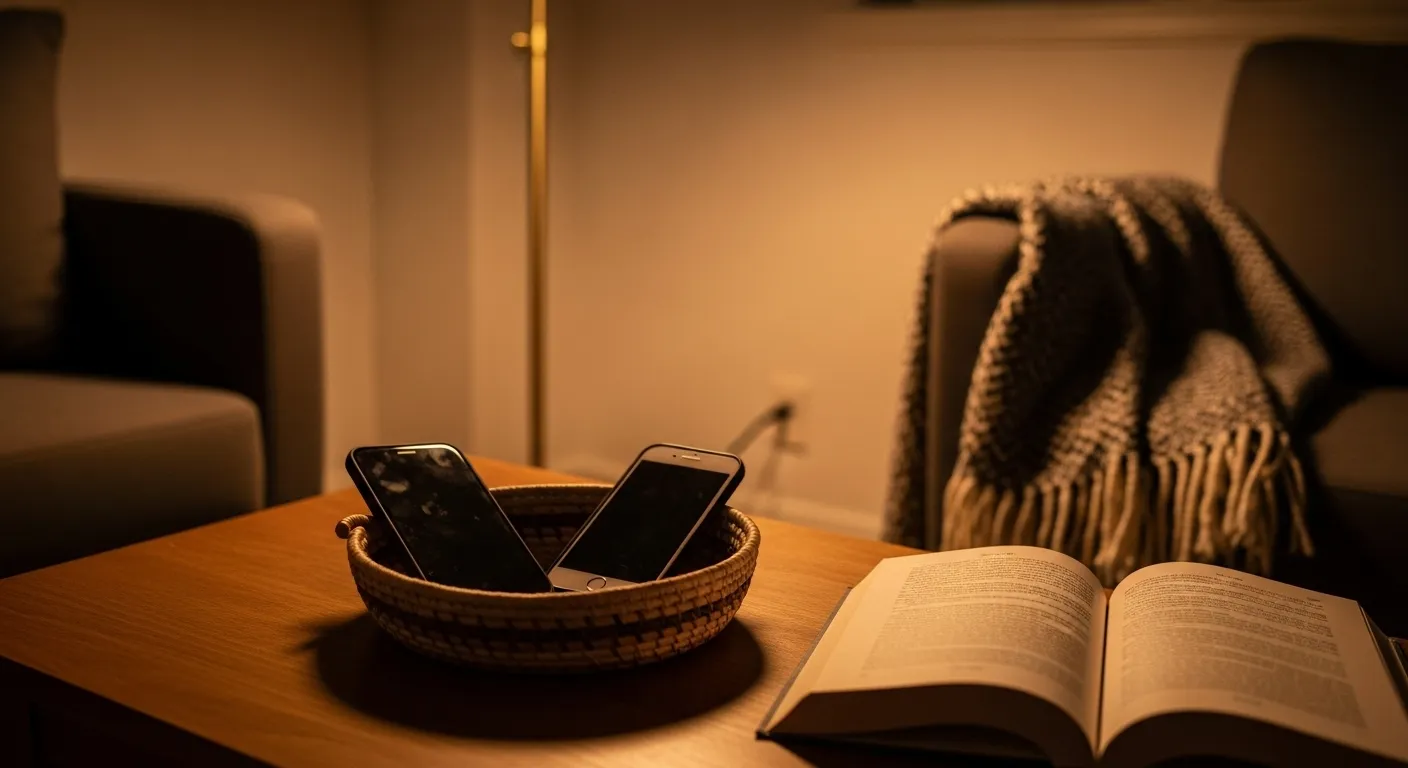
📚 Table of Contents
- Feeling the Friction? Let’s Find Your Focus.
- Understanding Your Attention: The First Step to a Productive Week
- The Four Core Focus Rituals for a Productive Week
- 1. The Startup Ritual: Win the First Hour
- 2. The Deep Work Entry Ritual: Crossing the Threshold
- 3. The Break Hygiene Ritual: Recharge Intelligently
- 4. The Shutdown Ritual: End the Day with Clarity
- Your 15-Minute Focus Starter Pack
- Mental Tools for a More Focused Mind
- 1. Reframe Perfectionism as a Form of Friction
- 2. Proactively Reduce Friction for Key Habits
- 3. Script Your Reset After a Derailment
- Putting It Into Practice: Two Common Scenarios
- Frequently Asked Questions About Focus and Productivity
- 1. Does listening to music or white noise actually help with focus?
- 2. I know multitasking is bad, but I feel like I have to do it. How do I stop?
- 3. What should I do when my motivation completely disappears?
- 4. How can I protect my evenings so I can actually rest and recharge?
- Your Seven-Day Challenge: Start Building Your Focused Week Today
Feeling the Friction? Let’s Find Your Focus.
Does your week ever feel like a blur? You start Monday with a clear plan, but by Wednesday, you are swimming in a sea of notifications, unexpected tasks, and a lingering sense of being behind. You work hard, but the progress you crave feels just out of reach. This feeling, this mental friction, is not a sign of failure. It is a sign that your attention is being pulled in too many directions at once.
Welcome. My name is your focus coach from TheFocusedMethod.com, and I want you to know that sustained focus is a skill, not a gift. Like any skill, it can be cultivated with the right tools and consistent practice. This is your complete weekly planning guide to moving from a state of reactive overwhelm to one of intentional, focused action. We are not looking for a perfect week. We are looking for a more present and productive week.
The modern world is designed to steal your attention. The constant pings, the endless scroll, the pressure to be always available. These things increase what scientists call cognitive load. Think of it as the total amount of mental effort being used in your working memory. When your cognitive load is too high, you cannot think clearly, solve problems, or make good decisions. Your brain simply runs out of bandwidth.
This guide will not give you more hours in the day. Instead, it will teach you how to protect and direct your most valuable resource: your focus. We will explore simple, evidence-aware rituals that create structure and reduce mental friction. We will build a toolkit of mental models to help you navigate distractions and regain control when your day gets derailed. This is how you plan a productive week, not by cramming more in, but by creating space for what truly matters.
Let’s begin this journey together. It is time to trade chaos for clarity and build a week that feels as good as it looks on paper.

Understanding Your Attention: The First Step to a Productive Week
Before we can build a focused week, we need to understand the forces working against us. Your attention is not a single, infinite resource. It is a dynamic system influenced by your environment, your energy, and your internal state. Planning a productive week begins with acknowledging these realities.
First, let’s talk about distractions. They come in two primary forms: external and internal. External distractions are the obvious ones. The phone buzzing on your desk. The email notification popping up on your screen. A colleague tapping you on the shoulder. These are the sensory inputs that pull your focus away from your intended task.
Internal distractions are often more subtle and challenging. They are the thoughts, feelings, and urges that arise from within. The sudden worry about an unpaid bill. The impulse to check social media. The memory of a difficult conversation. These internal triggers can be even more powerful than external ones because you cannot simply turn them off.
Every time you give in to one of these distractions, you engage in something called context switching. This is the act of shifting your attention from one task to another. It might seem harmless, but the cognitive cost is immense. Research suggests that even a brief interruption can derail your focus for over 20 minutes. Your brain has to disengage from the original task, load the new context, and then work to reload the original context when you return. This process is exhausting and is a primary reason why a day filled with “multitasking” leaves you feeling drained but not accomplished.
The second piece of the puzzle is understanding your natural energy rhythms. Your brain and body operate in cycles. You are not a machine that can maintain peak performance for eight hours straight. We experience natural ebbs and flows of energy throughout the day, often in 90 to 120-minute cycles. This is sometimes referred to as the ultradian rhythm. During the peak of a cycle, you have more energy and mental clarity, making it the perfect time for demanding work. During the trough, your brain needs to rest and recharge. A key part of any weekly planning guide is learning to work with these rhythms, not against them.
Ignoring these rhythms is like trying to sprint a marathon. You might start strong, but you will burn out quickly. By scheduling your most important work during your peak energy windows and planning deliberate breaks during your troughs, you create a sustainable pace for a truly productive week. This is not about laziness; it is about strategic energy management. For more information on the mind-body connection and performance, the American Psychological Association offers a wealth of resources.
So, the foundation of a focused week is simple awareness. Acknowledge the distractions, both external and internal. Respect the cost of context switching. And honor your natural energy cycles. With this understanding, we can now build the practical rituals to put these principles into action.

The Four Core Focus Rituals for a Productive Week
A plan is just a wish until you have a process. Rituals are the powerful, repeatable processes that turn your intention to be focused into a reality. They reduce the need for willpower by making your desired behaviors automatic. They create clear boundaries between different modes of work and rest. Here are four essential rituals to anchor your weekly planning and daily execution.

1. The Startup Ritual: Win the First Hour
How you begin your day sets the tone for everything that follows. A startup ritual is a consistent sequence of actions you perform at the beginning of your workday to get your mind centered, clarified, and ready for deep work. It is your defense against starting the day in a reactive mode, immediately pulled into the vortex of email and messages.
Your startup ritual does not need to be complicated. It should be a 10 to 15-minute practice that signals to your brain, “It’s time to focus now.” It could include reviewing your plan for the day, which you ideally created the evening before. Take a moment to identify your single most important task. This is the one thing that, if completed, will make the day a success. Write it down on a sticky note and place it in your line of sight. Then, take two minutes to tidy your physical and digital workspace. Close unnecessary tabs. Put away clutter. A clean space promotes clear thinking. Finally, take a few deep breaths. This simple act can calm your nervous system and prepare you for the work ahead.
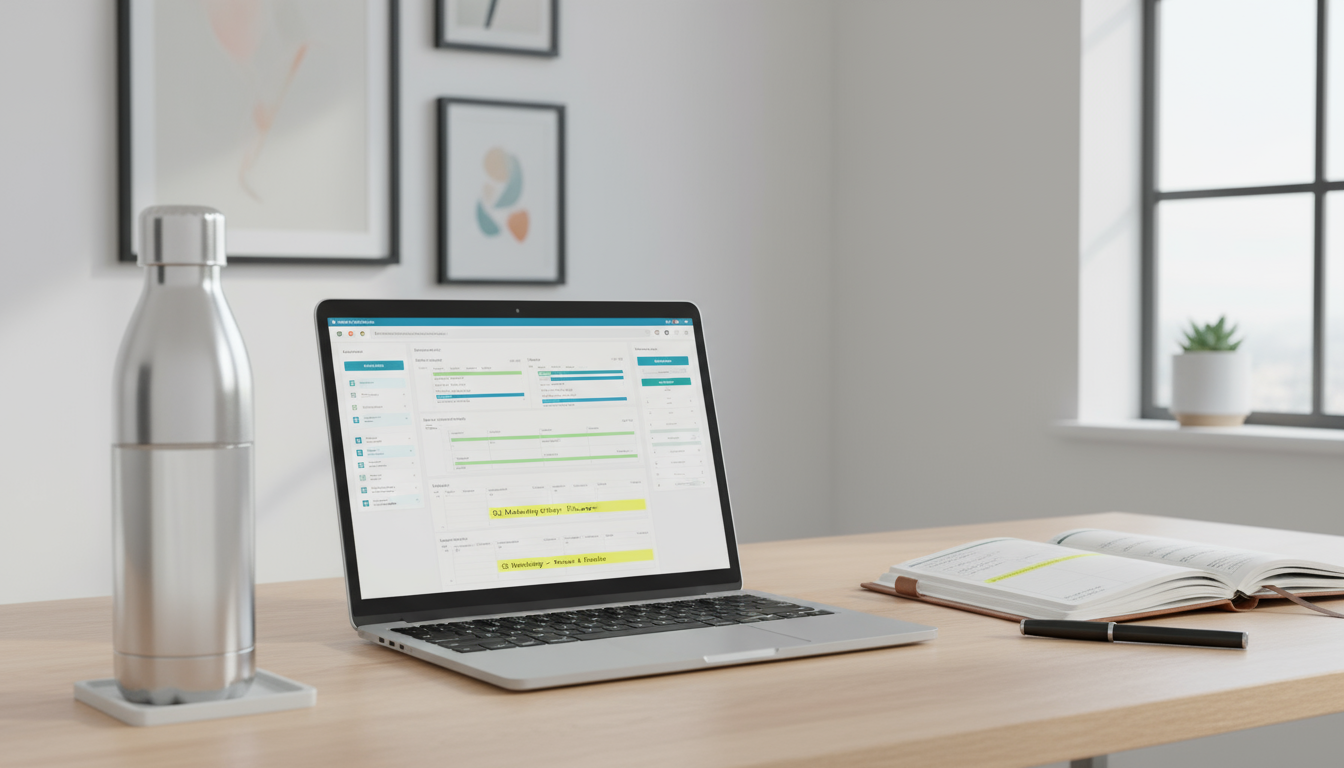
2. The Deep Work Entry Ritual: Crossing the Threshold
Getting started on a difficult, important task is often the hardest part. The deep work entry ritual is a short, simple routine that helps you overcome that initial resistance and transition smoothly into a state of high concentration. This state is often called flow, a mental state of being fully immersed in a feeling of energized focus, full involvement, and enjoyment in the process of an activity.
This ritual acts as a trigger. For example, you might put on a specific type of instrumental music or noise-canceling headphones. You could brew a specific cup of tea that you only drink when doing deep work. You might set a timer for a 25-minute “Pomodoro” session. The key is consistency. The sequence of actions—headphones on, timer set, task open—tells your brain that all distractions must now fade into the background. This is the heart of monotasking, the practice of dedicating your focus to a single task at a time. It is the direct opposite of context switching and the true secret to producing high-quality work efficiently.

3. The Break Hygiene Ritual: Recharge Intelligently
Breaks are not a sign of weakness; they are a biological necessity for sustained performance. But not all breaks are created equal. Mindlessly scrolling through your phone is not a restorative break. It just bombards your brain with more information, increasing cognitive load. Good break hygiene means taking breaks that actually replenish your mental energy.
The best breaks involve moving your body and resting your eyes. Stand up, stretch, and walk around for a few minutes. Look out a window at something in the distance to combat eye strain. Hydrate with a glass of water. If possible, step outside for a few moments of fresh air and sunlight. The goal is to disconnect completely from the work. Avoid checking email or engaging in work-related conversations during your break. A five-minute deliberate break every hour is far more effective than pushing through for three hours and then crashing.

4. The Shutdown Ritual: End the Day with Clarity
Just as a startup ritual helps you begin your day with intention, a shutdown ritual helps you end it with a sense of closure and control. This prevents work from bleeding into your personal time and allows your brain to fully disengage and recover. Without a clear end, your mind will continue to churn on work-related problems, leading to stress and poor sleep.
Your shutdown ritual should take about 10 minutes. First, review what you accomplished today. Acknowledge your progress, no matter how small. Second, capture any open loops. If there are tasks or ideas rattling around in your head, get them out and onto a trusted list for tomorrow. This tells your brain it can let go. Third, create a rough plan for tomorrow. Identify your top one to three priorities. This makes your startup ritual the next morning much easier. Finally, perform a physical act that signifies the end of the workday. This could be tidying your desk, closing your laptop, or saying a specific phrase like, “Shutdown complete.” This clear boundary is crucial for long-term focus and preventing burnout.

Your 15-Minute Focus Starter Pack
Feeling overwhelmed by all this? Here is a simple 15-minute routine you can use anytime to reset your focus. Think of it as a condensed version of these rituals.
Step 1 (5 minutes): Plan & Clarify. Grab a piece of paper. Write down everything on your mind. Circle the single most important task you need to work on next.
Step 2 (2 minutes): Prepare Your Environment. Close all unrelated tabs and applications. Put your phone on silent and out of sight. Tidy your immediate workspace.
Step 3 (8 minutes): Focused Sprint. Set a timer for just eight minutes. Work on your single chosen task with zero interruptions until the timer goes off.
This simple sequence breaks the cycle of overwhelm and proves you can achieve a state of focus, even if just for a few minutes. It is a powerful first step in building a more productive week.

Mental Tools for a More Focused Mind
Building a productive week is not just about managing your time and environment; it is about managing your mind. Your mindset, your internal narratives, and your emotional responses play a huge role in your ability to focus. Equipping yourself with the right thought tools can be just as impactful as any productivity app or system. Let’s explore three powerful mental models to support your weekly planning and daily focus.

1. Reframe Perfectionism as a Form of Friction
Perfectionism often masquerades as a commitment to high standards, but in reality, it is a major obstacle to progress and focus. The desire to do something perfectly can lead to procrastination, as the fear of not meeting an impossibly high bar makes it hard to even start. It also drains mental energy, as you spend more time worrying about the outcome than engaging in the process.
The reframe is this: think of “good enough” as the new “perfect.” The goal is not to produce flawless work on the first try. The goal is to make consistent progress. A finished project that is 80% perfect is infinitely more valuable than a project that is 0% finished because you are stuck on getting one detail 100% right. Embrace the idea of a “shitty first draft,” as author Anne Lamott calls it. Give yourself permission to be a beginner, to make mistakes, and to create something imperfect. This mindset shift reduces the emotional weight of your tasks, making it easier to enter a state of flow and get things done. A productive week is built on a foundation of completed tasks, not perfectly imagined ones.

2. Proactively Reduce Friction for Key Habits
Our brains are wired to follow the path of least resistance. If a desired behavior is difficult and a distracting behavior is easy, the distraction will win most of the time. Instead of relying on sheer willpower to make the right choice, strategically engineer your environment to make good choices easier and bad choices harder. This is the principle of reducing friction.
Want to start your day with focused work instead of checking email? Reduce the friction for focused work by preparing your most important task the night before. Increase the friction for checking email by logging out of your email client at the end of the day. Want to drink more water? Keep a full water bottle on your desk at all times. Want to stop mindlessly checking your phone? Move the distracting apps off your home screen and into a folder, or place your phone in another room while you work. Each small adjustment you make to reduce friction for good habits and increase it for bad ones is a vote for your future, more focused self. This is a core tenet of building a system that supports your goals, a cornerstone of an effective weekly planning guide.

3. Script Your Reset After a Derailment
No matter how well you plan, you will have moments—or even entire days—where your focus is completely derailed. An urgent issue arises. You get pulled into a series of unplanned meetings. You simply wake up feeling off. The difference between a productive week and a frustrating one is not the absence of these moments, but how quickly you recover from them.
A pre-scripted reset is your emergency plan. Instead of spiraling into frustration or guilt, you have a simple, pre-decided action to take. Your script could be as simple as this: “I notice I’m off track. That’s okay. I will now stand up, drink a glass of water, and look at my plan for one minute to decide on the next small step.” The key is to make it a non-judgmental observation followed by a simple, physical action. The act of standing up and getting water breaks the mental pattern of distraction. Looking at your plan for just one minute reconnects you with your intentions without the pressure of having to fix the whole day at once. Having this script ready removes the decision-making burden when you are already feeling depleted, making it much easier to get back on the path to a productive day.
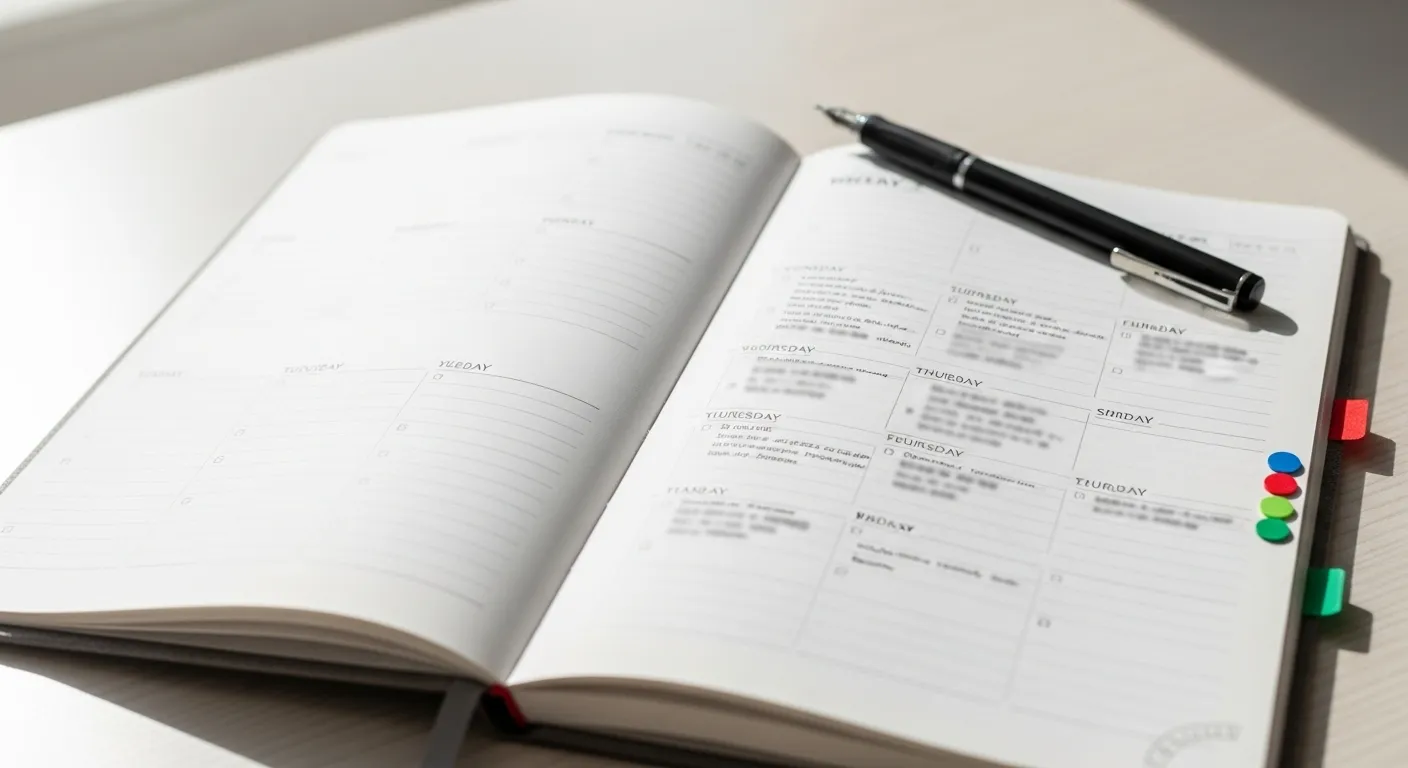
Putting It Into Practice: Two Common Scenarios
Theory is one thing, but application is another. Let’s walk through how to apply these focus rituals and mental tools to two very common and challenging situations. This is where your weekly planning guide meets reality.
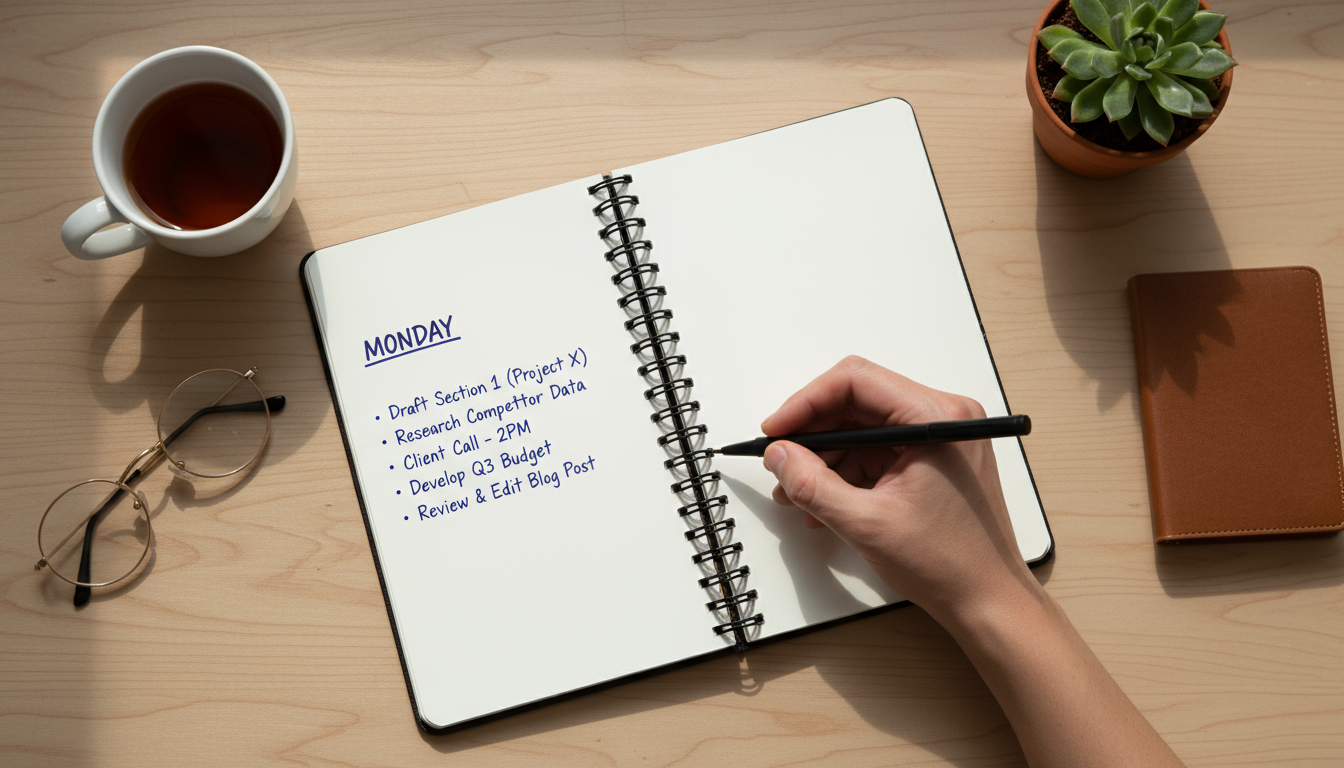
Scenario 1: The Tight Deadline Project
You have a major project due at the end of the week. The pressure is on, and the temptation is to work frantically, skipping breaks and trying to do everything at once. This approach almost always leads to burnout and sloppy work. Here is a more focused way.
The Plan: Your weekly planning starts by breaking the project down into small, concrete daily goals. Instead of a to-do list that says “Work on Project X,” your list for Monday says, “Draft Section 1” and “Research competitor data.” This clarity reduces overwhelm.
The Rituals: You lean heavily on your rituals. Your Startup Ritual is non-negotiable; you use it to review your specific project goal for the day. You use the Deep Work Entry Ritual to get started on the most challenging part of the project first thing in the morning, during your peak energy window. You set a timer for 50-minute work blocks, followed by a mandatory 10-minute Break Hygiene Ritual where you get up and walk away from your desk. This prevents mental fatigue. Finally, your Shutdown Ritual is critical. You end the day by noting your progress and planning the very next task for tomorrow, ensuring you can hit the ground running.
The Thought Tools: You actively reframe perfectionism. Your goal is to complete a solid draft, not a literary masterpiece. You get words on the page, knowing you can edit later. You reduce friction by closing your email client and putting your phone in a drawer during your 50-minute focus blocks. When an unexpected meeting interrupts your flow, you use your scripted reset: “Okay, that was a derailment. I’ll take five minutes to stretch and then review my project outline to get back on track.”
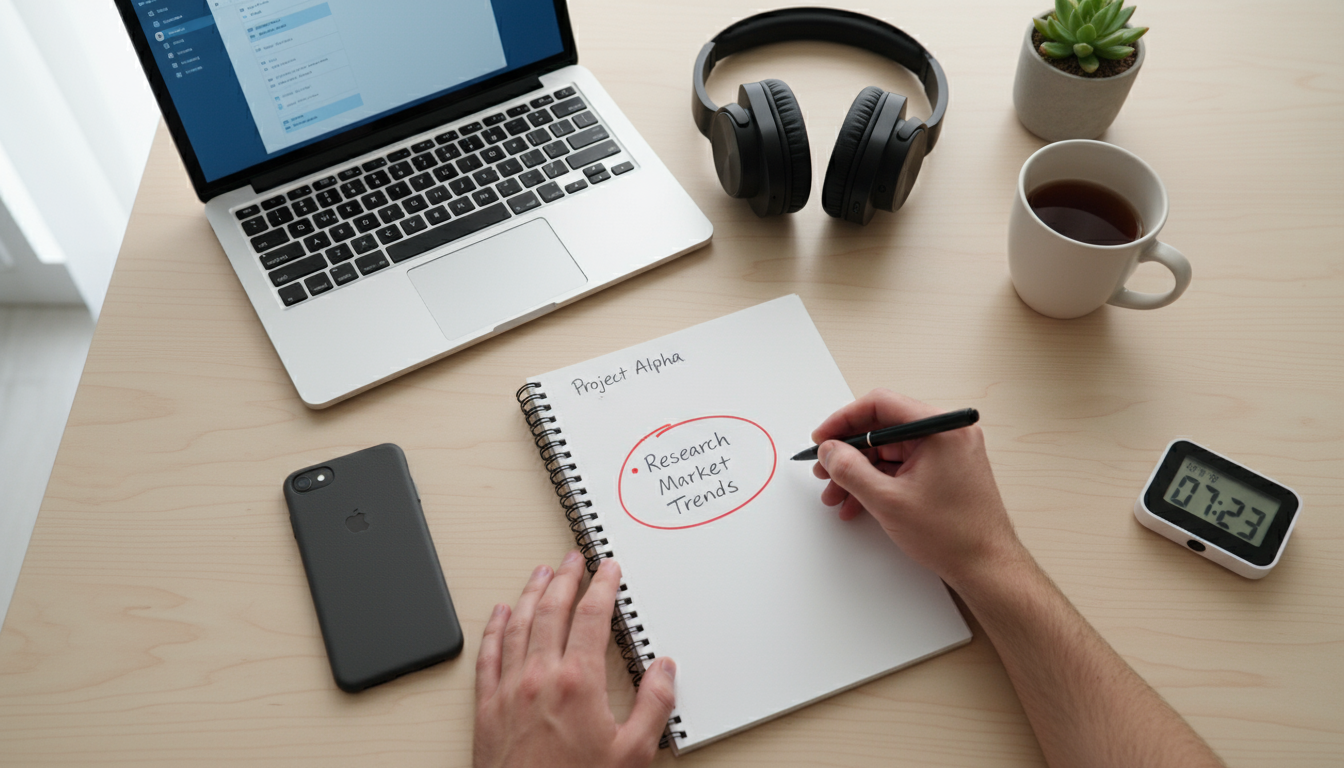
Scenario 2: The Noisy, Distracting Home Environment
You work from home, and your environment is filled with potential distractions: family members, pets, household chores, the refrigerator calling your name. It feels impossible to get into a deep state of focus.
The Plan: Communication is key. As part of your weekly planning, you have a brief meeting with your family or housemates to outline your “focus hours.” You define when you need uninterrupted time and when you are available. You set clear expectations.
The Rituals: Your rituals create psychological boundaries when physical ones are weak. Your Startup Ritual might include putting on a specific “work” sweater or moving to a designated workspace, even if it is just a corner of the kitchen table. Your Deep Work Entry Ritual is essential. This is where noise-canceling headphones become your best friend. They are a powerful signal to yourself and others that you are “in the zone.” Your Break Hygiene Ritual involves actively leaving your workspace. Go to another room, step outside, or engage with your family for a few minutes. This prevents your workspace from feeling like a cage. Your Shutdown Ritual is about physically packing away your work. Closing the laptop and putting it in a bag signals the transition from “work mode” to “home mode.”
The Thought Tools: You practice self-compassion. You accept that interruptions will happen. Instead of getting frustrated, you use your scripted reset to calmly handle the interruption and then guide your attention back to your task. You reduce friction for focus by preparing your lunch and snacks ahead of time so you are not tempted to wander into the kitchen. You also increase friction for distractions, like placing the TV remote in a drawer. You fight the urge to multitask household chores with work, reminding yourself of the high cost of context switching.

Frequently Asked Questions About Focus and Productivity
As a focus coach, I hear many of the same questions from people who are starting their journey to a more productive week. Here are answers to some of the most common ones, grounded in our understanding of how attention works.
1. Does listening to music or white noise actually help with focus?
The answer is: it depends. For some people, especially those in noisy environments, a consistent, non-distracting sound can be very helpful. White noise, binaural beats, or instrumental music (without lyrics) can mask jarring background sounds and help the brain enter a more focused state. The key is that the audio should be predictable and monotonous. Music with lyrics, on the other hand, can be a major distraction because the language-processing centers of your brain are activated, competing for cognitive resources. The best approach is to experiment. Try working in silence, with white noise, and with instrumental music, and see what helps you achieve a state of flow most easily. If it helps you monotask, it is a useful tool.
2. I know multitasking is bad, but I feel like I have to do it. How do I stop?
The “multitasking myth” is a powerful one. What we think of as doing two things at once is actually rapid, inefficient context switching. The first step to stopping is to fully accept the cognitive cost. Remind yourself that switching costs you time and mental energy. Start small. The goal is not to eliminate multitasking from your entire life overnight. The goal is to create protected blocks of time for monotasking. Begin with one 25-minute block each day dedicated to a single, important task. No email, no phone, no other tabs. Use your deep work entry ritual to begin. As you experience the clarity and productivity of these sessions, you will be more motivated to expand them. It is about building the monotasking muscle, one focused session at a time.
3. What should I do when my motivation completely disappears?
Motivation is a feeling, and feelings are fickle. They come and go. A productive week is not built on motivation; it is built on systems and rituals. When motivation is low, do not try to “think” your way into feeling motivated. Instead, rely on action. Use your thought tool of reducing friction. Make the first step so ridiculously small that you cannot say no. For example, instead of “write the report,” the first step is “open the document.” That is it. Once the document is open, the next step might be “write one sentence.” Action often precedes motivation. By taking a tiny, low-friction step, you begin to build momentum, and motivation often follows. Remember your scripted reset, too. A quick walk or a glass of water can be enough to shift your state and make that first small action possible. The brain’s health and ability to regulate motivation is a complex topic; for credible health information, you can always consult resources like the National Institutes of Health.
4. How can I protect my evenings so I can actually rest and recharge?
Protecting your evenings is one of the most important things you can do for next-day productivity. The key is creating a hard boundary, and this is where the shutdown ritual is invaluable. When you perform your shutdown ritual, you are making a conscious decision to end the workday. This is a clear signal to your brain. To reinforce this, create friction for re-engaging with work. Leave your work laptop in your office or bag. Turn off work-related notifications on your phone after a certain time. Create an “after-work” routine that you look forward to, whether it is exercise, cooking, reading, or spending time with loved ones. This gives your brain something positive to transition to. If a work-related thought pops into your head, have a notepad handy to write it down for tomorrow, then release it. This honors the thought without letting it hijack your evening.
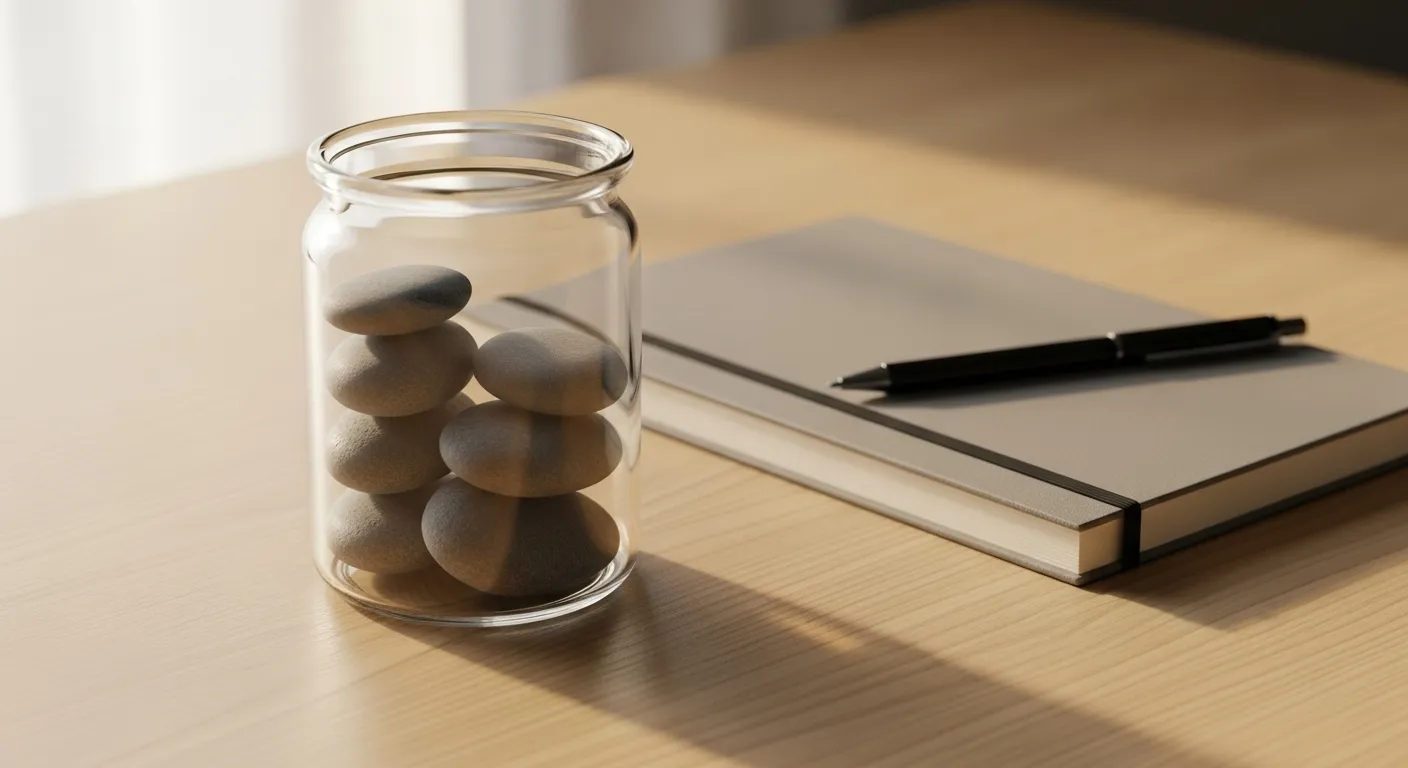
Your Seven-Day Challenge: Start Building Your Focused Week Today
You have just absorbed a lot of information. This weekly planning guide is designed to be a comprehensive resource, but the most important step is the one you take next. Knowledge is only potential; action is power. Let’s distill all of this into a simple, seven-day challenge to kickstart your journey toward a more focused and productive week.
Do not try to implement everything at once. That is a recipe for overwhelm. Instead, for the next seven days, commit to practicing just a few core actions. The goal here is not perfection; it is consistency. We are building a foundation, one small ritual at a time.
Here are three simple focus actions to try. Choose one, two, or all three if you feel ambitious. Track your experience in a simple notebook. How did it feel? What worked? What was challenging?
Focus Action 1: Implement a 10-Minute Shutdown Ritual. Before you finish work each day, take ten minutes to do the following. First, write down what you accomplished. Second, capture any open tasks for tomorrow. Third, identify your single most important task for the next day. Finally, close your computer and tidy your workspace. This single habit can transform how you feel at the end of the day and how you begin the next one.
Focus Action 2: Practice Two 25-Minute Monotasking Blocks. Twice per day, identify a specific task, set a timer for 25 minutes, and work on that task and that task only. Put your phone away. Close your email. Resist the urge to switch. When the timer goes off, take a five-minute break where you get up and move. This will demonstrate the power of dedicated, single-tasked attention.
Focus Action 3: Name Your Distractions. For one day this week, keep a simple tally sheet next to you. Every time you get distracted or feel the urge to context switch, make a mark. At the end of the day, look at the list. This is not an exercise in judgment. It is an exercise in awareness. Simply noticing how often your attention is pulled away is the first and most powerful step toward regaining control of it.
This is your starting point. This is how you begin to plan a productive week that is built on a foundation of focus, not frantic effort. You have the tools. You understand the principles. Now is the time to take that first small, intentional step. We at TheFocusedMethod.com are here to support you on this path. You can do this.
Disclaimer: The information provided in this article is for informational purposes only and is not intended to be a substitute for professional medical advice, diagnosis, or treatment. Always seek the advice of your physician or other qualified health provider with any questions you may have regarding a medical condition or mental health concerns.






